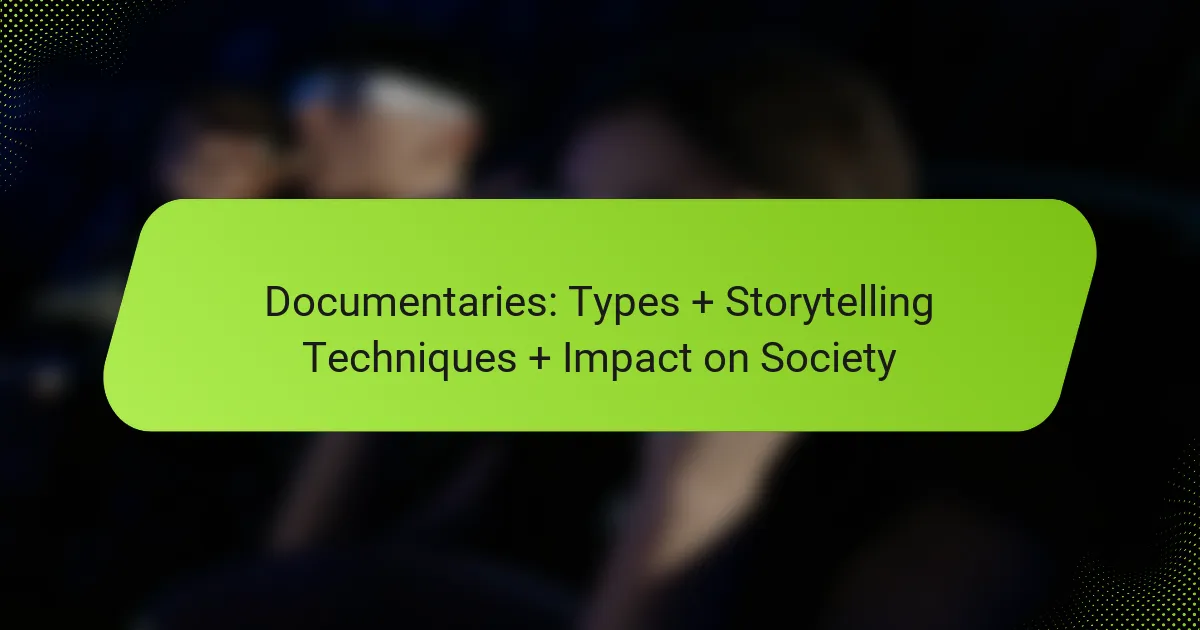
What are Indie Films?
Indie films are independent films made outside the traditional studio system. They are typically produced with lower budgets than mainstream films. These films often focus on unique storytelling and artistic expression. Indie films allow filmmakers creative freedom not usually found in larger productions. They may tackle unconventional themes or experimental techniques. Many indie films gain recognition at film festivals, such as Sundance or Cannes. The success of indie films has influenced mainstream cinema, leading to more diverse storytelling. Notable indie films include “The Blair Witch Project” and “Moonlight,” which achieved critical acclaim and commercial success.
How do Indie Films differ from mainstream films?
Indie films differ from mainstream films primarily in their production approach and distribution methods. Indie films are typically produced outside of the major studio system. They often have lower budgets, allowing for more creative freedom. This results in unique storytelling and innovative techniques. Mainstream films usually rely on larger budgets and commercial appeal. They often follow established formulas to attract a wider audience. According to the Independent Film & Television Alliance, indie films account for about 20% of the market share, showcasing their unique position in the industry.
What defines the production scale of Indie Films?
The production scale of Indie Films is defined by budget constraints, creative freedom, and distribution methods. Indie films typically operate on lower budgets, often under $2 million. This financial limitation influences the resources available for production. Creative freedom allows filmmakers to explore unconventional narratives and styles. Many indie films are distributed through film festivals rather than traditional studios. This approach can lead to niche audiences and unique marketing strategies. The production scale often results in a more personal storytelling style. Indie films frequently prioritize artistic expression over commercial viability. These factors collectively define the unique production scale of indie films.
How does the budget of Indie Films compare to mainstream films?
Indie films typically have significantly lower budgets compared to mainstream films. The average budget for indie films ranges from $100,000 to $2 million. In contrast, mainstream films often have budgets exceeding $100 million. This budget disparity affects production quality, marketing reach, and distribution capabilities. For instance, a blockbuster film may spend over $50 million on marketing alone. Additionally, indie films rely heavily on creative storytelling and unique concepts to attract audiences. This financial difference often leads to a more diverse range of narratives in indie cinema.
What are the key characteristics of Indie Films?
Indie films are characterized by their independent production and distribution. They typically have lower budgets compared to mainstream films. Indie films often prioritize artistic expression over commercial success. They frequently explore unconventional narratives and diverse themes. These films are usually created outside of the major studio system. They often feature emerging talent in acting and directing roles. Indie films may also experiment with unique storytelling techniques. Their distribution often relies on film festivals and independent theaters.
What themes are commonly explored in Indie Films?
Indie films commonly explore themes of identity, social issues, and personal relationships. These films often focus on the complexities of individual experiences. Many indie films delve into topics like mental health, family dynamics, and love. They frequently address societal challenges such as poverty, discrimination, and environmental concerns. The storytelling in indie films tends to be character-driven rather than plot-driven. This allows for deeper emotional connections with the audience. Additionally, themes of existentialism and self-discovery are prevalent. The unique narrative styles often reflect the filmmakers’ personal perspectives.
How do storytelling techniques in Indie Films differ?
Indie films often utilize unconventional storytelling techniques that differ from mainstream cinema. They frequently prioritize character development over plot-driven narratives. This focus allows for deeper emotional connections and exploration of complex themes. Indie films often employ non-linear storytelling, which can create a unique viewing experience. They also tend to have a more experimental approach to dialogue and pacing. This can lead to a more authentic representation of real-life conversations. Additionally, indie films may incorporate personal and autobiographical elements, reflecting the filmmaker’s distinct voice. These techniques contribute to a more intimate and relatable storytelling style.

What unique attributes do Indie Films possess?
Indie films possess unique attributes that distinguish them from mainstream cinema. They often have lower budgets, typically ranging from a few thousand to several million dollars. This financial constraint fosters creativity and innovation in storytelling and production. Indie films frequently explore unconventional narratives and themes that may not appeal to mass audiences. They prioritize artistic expression over commercial viability. Many indie films showcase emerging talent, including directors and actors. This focus on new voices contributes to diverse storytelling. Additionally, indie films often emphasize character development and emotional depth. These attributes create a distinct viewing experience compared to mainstream films.
How does creative freedom manifest in Indie Films?
Creative freedom in indie films manifests through unrestricted storytelling and artistic expression. Independent filmmakers often have the liberty to explore unconventional narratives. This allows for unique character development and diverse themes. They can tackle social issues without commercial constraints. Additionally, indie films often feature innovative cinematography and editing techniques. The lack of studio interference encourages personal visions to shine through. This creative autonomy results in films that resonate deeply with niche audiences. According to a study by the Sundance Institute, indie films frequently reflect authentic voices and cultural diversity, further illustrating their creative freedom.
What role do independent filmmakers play in shaping narratives?
Independent filmmakers play a crucial role in shaping narratives by introducing diverse perspectives and innovative storytelling techniques. They often explore themes and subjects that mainstream cinema overlooks. This results in a broader representation of cultures and experiences. Independent films frequently challenge societal norms and provoke thought. Their unique narratives can influence audience perceptions and discussions. For example, films like “Moonlight” and “The Blair Witch Project” have significantly impacted cinematic storytelling. They demonstrate how independent filmmakers can redefine genre conventions and narrative structures. Independent cinema often serves as a testing ground for new ideas that later influence mainstream films. This dynamic fosters a more inclusive film industry and encourages creative risk-taking.
How do Indie Films approach character development differently?
Indie films approach character development through a focus on authenticity and depth. They often prioritize nuanced portrayals over conventional archetypes. This leads to more relatable and complex characters. Indie filmmakers frequently use improvisation to enhance realism. They also explore unconventional narratives that challenge traditional character arcs. This approach allows for greater emotional resonance with audiences. Research shows that indie films often feature characters facing moral dilemmas, which adds depth. For example, films like “Lady Bird” and “The Florida Project” highlight personal growth through everyday struggles.
What are some notable examples of unique Indie Films?
Notable examples of unique indie films include “Eraserhead,” “The Blair Witch Project,” and “Moonlight.” “Eraserhead,” directed by David Lynch, is known for its surreal imagery and sound design. “The Blair Witch Project,” directed by Daniel Myrick and Eduardo Sánchez, popularized the found-footage genre and was made on a minimal budget of $60,000, grossing nearly $250 million worldwide. “Moonlight,” directed by Barry Jenkins, won the Academy Award for Best Picture in 2017 and is recognized for its exploration of identity and sexuality. Each of these films showcases distinctive storytelling and innovative techniques that set them apart in the indie film landscape.
What makes “The Blair Witch Project” a standout Indie Film?
“The Blair Witch Project” is a standout indie film due to its innovative use of found footage and grassroots marketing. This film popularized the found footage genre, creating a sense of realism that resonated with audiences. It was produced on a modest budget of approximately $60,000 and grossed nearly $250 million worldwide. The marketing strategy included a viral campaign that blurred the lines between fiction and reality. The film’s realistic portrayal of fear and isolation set it apart from traditional horror films. Its success demonstrated the potential for indie films to achieve mainstream recognition. The cultural impact is evident in its influence on subsequent horror films and indie filmmaking practices.
How did “Lady Bird” redefine Indie filmmaking conventions?
“Lady Bird” redefined Indie filmmaking conventions by focusing on a deeply personal narrative. The film centers on a young woman’s coming-of-age story. It emphasizes character development over plot-driven storytelling. This approach contrasts with traditional Indie films, which often prioritize quirky plots. “Lady Bird” also features a strong female lead, which is less common in the genre. Its success at the box office challenged the notion that Indie films must be low-budget. The film received critical acclaim and multiple award nominations, further legitimizing its place in cinema. This success helped pave the way for more diverse stories in Indie filmmaking.

What influence do Indie Films have on mainstream cinema?
Indie films significantly influence mainstream cinema by introducing innovative storytelling techniques and diverse perspectives. They often challenge conventional narratives and explore complex themes that resonate with audiences. This influence encourages mainstream filmmakers to experiment with style and content. For instance, films like “The Blair Witch Project” and “Little Miss Sunshine” have inspired major studios to embrace non-traditional formats and storytelling methods. Moreover, indie films frequently highlight underrepresented voices, prompting mainstream cinema to diversify its offerings. According to a report by the Sundance Institute, indie films have contributed to a 25% increase in the representation of marginalized groups in films over the past decade. This shift reflects the growing recognition of the value of unique narratives in appealing to broader audiences.
How do Indie Films challenge conventional filmmaking norms?
Indie films challenge conventional filmmaking norms by prioritizing artistic expression over commercial viability. They often feature unconventional narratives that diverge from mainstream story structures. This includes non-linear storytelling and ambiguous endings. Indie filmmakers frequently explore marginalized voices and diverse perspectives. They also tend to operate with lower budgets, allowing for innovative techniques and experimentation. The success of films like “The Blair Witch Project,” made for $60,000, demonstrates the potential for profitability outside traditional models. Additionally, indie films often utilize grassroots marketing strategies, bypassing major studios. This approach fosters a direct connection with audiences, promoting authenticity.
What trends have emerged in mainstream cinema due to Indie influence?
Mainstream cinema has adopted several trends due to Indie influence. These trends include a focus on character-driven narratives. Independent films often emphasize deep character development over plot-driven stories. This shift has led to more nuanced portrayals of complex characters in mainstream films. Additionally, mainstream cinema has embraced unconventional storytelling techniques. Techniques such as non-linear narratives and ambiguous endings are now more common.
Another trend is the increased diversity of voices and perspectives. Indie films frequently highlight underrepresented groups. This has prompted mainstream filmmakers to explore diverse themes and characters. Moreover, the aesthetic of Indie films has influenced visual styles in mainstream cinema. Low-budget filming techniques and naturalistic cinematography are now prevalent.
Finally, there is a greater acceptance of risk-taking in content. Mainstream studios are more willing to invest in innovative ideas and unique concepts. This trend aligns with the Indie spirit of pushing creative boundaries. Overall, Indie films have significantly shaped the landscape of mainstream cinema.
How do Indie Films impact audience expectations of storytelling?
Indie films significantly impact audience expectations of storytelling by offering diverse narratives and unconventional structures. They often prioritize character development over plot-driven stories. This focus encourages viewers to seek deeper emotional connections with characters. Audiences now expect more authentic and relatable storytelling. Indie films frequently explore themes that mainstream cinema might overlook. The success of films like “Moonlight” and “Lady Bird” illustrates this shift. These films challenge traditional storytelling norms and inspire audiences to embrace complexity. As a result, viewers increasingly anticipate innovation and originality in narratives.
What collaborations exist between Indie filmmakers and mainstream studios?
Collaborations between indie filmmakers and mainstream studios often take the form of co-productions. These partnerships allow for shared resources and creative input. For example, the film “The Blair Witch Project” was produced by an independent team but distributed by Artisan Entertainment. This collaboration helped the film achieve massive box office success. Another instance is “Little Miss Sunshine,” which involved both indie producers and a mainstream studio, Fox Searchlight. Such collaborations can enhance the visibility of indie films while providing studios with unique content. Additionally, some mainstream studios now have divisions dedicated to indie projects, like Focus Features. These collaborations create opportunities for innovative storytelling that blends indie creativity with mainstream distribution.
How do these collaborations affect the creative process?
Collaborations in indie films enhance the creative process by bringing diverse perspectives together. This diversity fosters innovation and can lead to unique storytelling. Collaborators often share resources, which can result in more experimental techniques. The pooling of skills allows for a richer exploration of themes. Additionally, collaborative environments encourage open communication and idea exchange. This can lead to unexpected creative breakthroughs. Research indicates that collaborative projects often yield higher artistic quality. A study by the University of Southern California found that teamwork in film production significantly improves creative outcomes.
What are the benefits of such partnerships for Indie filmmakers?
Partnerships provide significant benefits for indie filmmakers. They enhance access to funding and resources. Collaborating with established entities can lead to increased visibility. Partnerships often result in shared marketing efforts, expanding audience reach. They may also facilitate networking opportunities within the industry. Collaborations can improve production quality through shared expertise. Additionally, partnerships can lead to distribution deals that indie filmmakers might not secure alone. These benefits collectively contribute to the success and sustainability of indie films.
What practical tips can aspiring filmmakers learn from Indie Films?
Aspiring filmmakers can learn several practical tips from indie films. First, they showcase the importance of storytelling. Indie films often prioritize strong narratives over big budgets. This highlights that compelling stories resonate more with audiences. Second, indie films demonstrate the value of creativity and innovation. Limited resources push filmmakers to think outside the box. They often use unique visual styles and unconventional narratives. Third, indie films emphasize the significance of networking and collaboration. Many successful indie filmmakers rely on relationships built within the industry. This fosters a supportive community that can help in various aspects of filmmaking. Fourth, aspiring filmmakers can learn about the importance of audience engagement. Indie films often cultivate dedicated fan bases through grassroots marketing. This shows that connecting with viewers can lead to greater success. Lastly, indie films teach the necessity of perseverance. Many indie filmmakers face numerous challenges but continue to pursue their vision. This resilience is crucial in the competitive film industry.
Indie films are independent productions created outside the traditional studio system, typically characterized by lower budgets and a focus on unique storytelling and artistic expression. This article explores the defining features of indie films, including their production scale, budget comparisons to mainstream films, and common themes such as identity and social issues. Additionally, it examines how indie films influence mainstream cinema by introducing innovative storytelling techniques and diverse perspectives. The piece highlights notable examples of indie films and discusses the collaborative relationships between indie filmmakers and mainstream studios, as well as practical tips for aspiring filmmakers.



